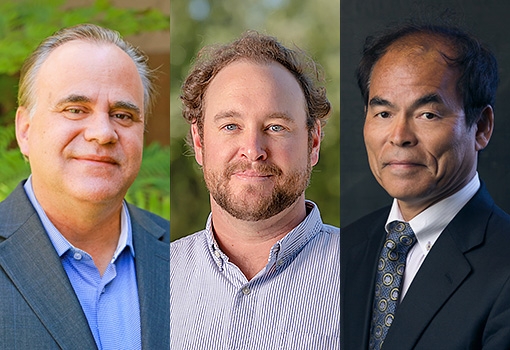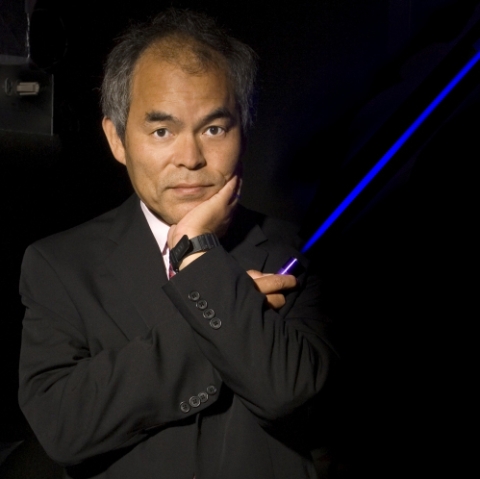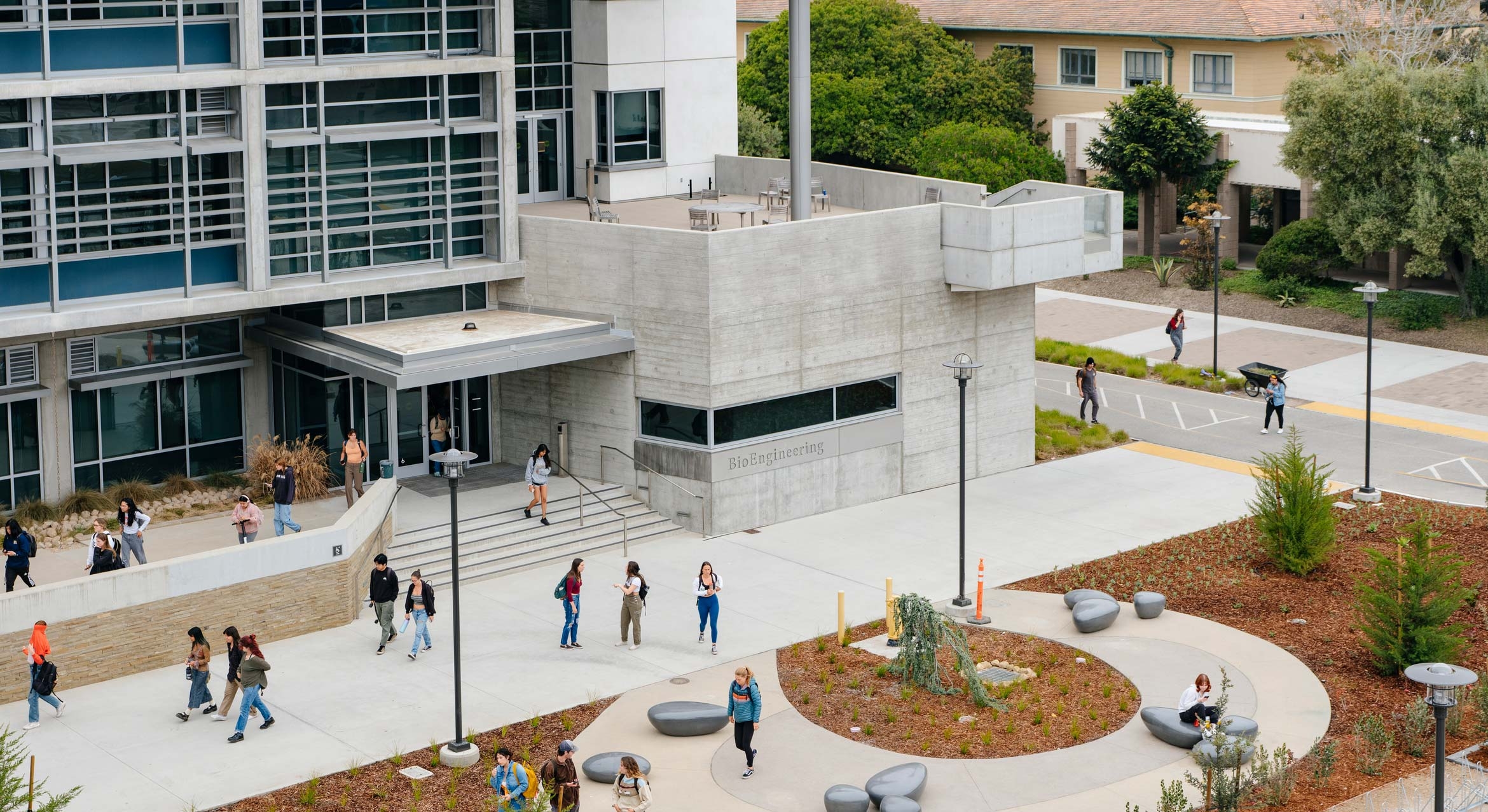A seed grant for light-driven catalysis
Catalysis, an indispensable process in chemical engineering, requires energy, often in the form of heat, to activate the requisite chemical reactions. Photons generated by a laser can also provide the energy for catalytic conversions and enable reactions that cannot be performed with heat.
And while light-driven catalysis is not entirely new, there is potential for improvement in the process, according to Phillip Christopher, a professor in the Chemical Engineering Department at UC Santa Barbara who specializes in catalysis. A new one-year, $50,000 UCSB Institute for Energy Efficiency seed grant is intended to spark a process aimed at doing just that.
Currently available mass-produced “off-the-shelf” lasers have not been designed with catalysis applications in mind, Christopher said, “because you can’t systematically pulse them on and off with as much control as you would like to have in terms of speed and wavelength.”
Now Christopher will collaborate with UCSB professors Shuji Nakamura, who won the 2014 Nobel Prize in Physics for inventing the blue LED on a gallium nitride (GaN) substrate, and laser expert Steven DenBaars, who with Nakamura co-directs the Solid State Lighting & Energy Electronics Center (SLEEC) at UCSB, to develop custom lasers intended to power more efficient photon-driven catalytic processes.

“We told Phil that we can help make the lasers in a way that will allow for greater control over how quickly they modulate on and off, how the output of the light is controlled directionally, and how we can tailor the emission wavelength to match the catalysis energy needed,” DenBaars said. “Rather than buying off-the-shelf lasers that have limited operational capabilities, we think we can take it to the next level and provide him with something that can be tailored specifically for this application.”
“Photo catalysis requires a high-power laser of a specific wavelength, and commercially available lasers have limited wavelength and output powers that are not enough for the application,” said Nakamura. “We will address that by building purpose-specific laser structures with quantum-well active layers on a special crystal orientation of a GaN ‘semi-polar’ substrate.”
“We will be developing novel laser diodes in the blue light to UV range having wavelengths optimized to drive specific catalytic reactions with greater energy efficiency than can be achieved using heat alone,” DenBaars added.
One challenge in the realm of light-driven catalysis is that the process is hard to scale for industrial applications because light doesn’t penetrate very deeply into a catalyst bed. As a result, Christopher explained, “There are only small volumes [of the material] where a reaction can take place, so, we will be looking at a custom laser designed for high-efficiency operation of relatively small distributed applications. It does, however, allow us to increase by an as-yet unknown amount the efficiency with which electricity is converted to the energy source — in the form of photons — that drives the chemistry.”
The three researchers plan to perform experiments comparing how efficiently off-the-shelf LED lasers drive catalytic chemistry with the efficiency of custom-made lasers. One possible application of this work is the burgeoning interest in making hydrogen on-site without releasing emissions. As Christopher explained, some people do that by cracking ammonia (NH3), releasing hydrogen and benign nitrogen gas. An immediate goal of the seed-funded research is to “tailor the LED laser operation to promote the energy efficiency of this reaction.”
Shelly Leachman
Editorial Director
(805) 893-2191
sleachman@ucsb.edu




